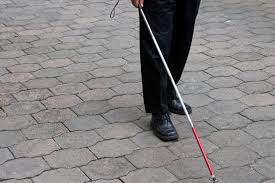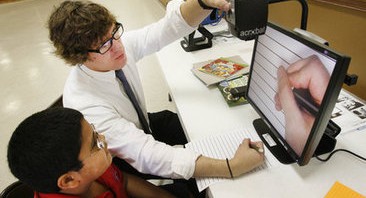The National Eye Institute (NEI), part of the National Institutes of Health, is funding several new technologies and tools being created to help the 4.1 million Americans living with low vision or blindness. The tools are designed to help people manage daily tasks such as navigating office buildings, crossing streets, and recognizing images and objects.… Continue reading NEI Highlights New Technologies and Tools for People with Low Vision
Tag: assistive technology
Breaking Blind YouTube Channel Provides Advice for Living with Low Vision
Looking for “how to” videos that teach you how to adapt to vision loss? Check out the “Breaking Blind” YouTube channel to follow creator Maureen Neitfeld as she demonstrates everything from making fudge to working out. Maureen Neitfeld lost her sight at 17 from a disorder called Von Hippel-Lindau Syndrome that causes tumors to grow… Continue reading Breaking Blind YouTube Channel Provides Advice for Living with Low Vision
iPads and iPhones Can Replace Assistive Technology Devices
If you have experienced vision loss and are in need of assistive technology aids, you may want to look into an iPad. These devices can serve as adjustable magnifiers, and, given their voice-over or zoom features, can provide help with a number of other activities including listening to weather reports, searching for a phone number,… Continue reading iPads and iPhones Can Replace Assistive Technology Devices
How Can Occupational Therapy Assist You?
Occupational Therapists work with the visually impaired in a large variety of settings such as low vision clinics, schools, hospitals, nursing facilities, the workplace and in people’s homes. They collaborate and work with other low vision professionals to reduce the impact of vision loss and promote independence.



